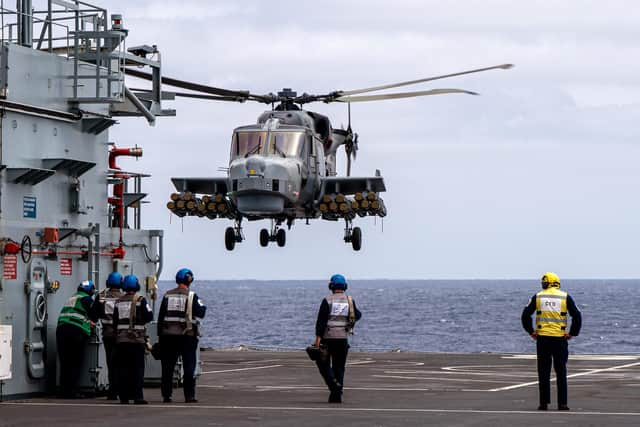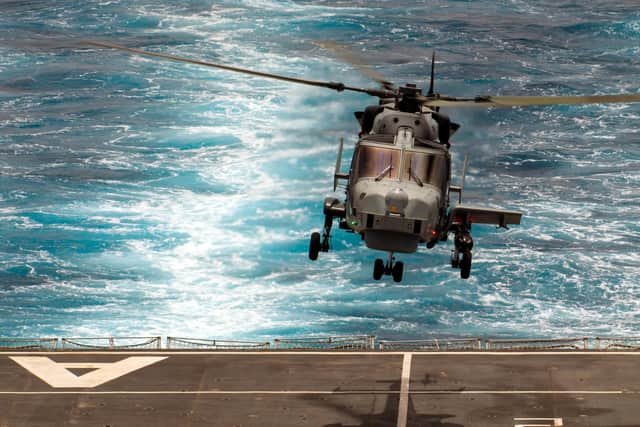Royal Navy rolls-out new supersonic missiles designed to protect HMS Queen Elizabeth and HMS Prince of Wales after 'exceeding' expectations in Atlantic and Mediterranean trials
and live on Freeview channel 276
Battling the elements in the Atlantic and the Mediterranean for more than a month, Wildcat helicopters working alongside RFA Argus undertook the last trials of the Martlet and Sea Venom missiles.
Both missiles come under the banner of the Future Anti-Surface Guided Weapon, with the 13kg Martlet intended to eliminate swarms of small boats while the Sea Venom packs ten-times the punch, ready to puncture heavily armoured warships.
Advertisement
Hide AdAdvertisement
Hide Ad

Now aviators and engineers say the tests exceeded expectations and are key to the missiles’ future operations.
Around 30 people – including aircrew, scientists, meteorologists, test pilots and technicians from across the Navy, Ministry of Defence, and industry – were involved in the trials.
These involved the Wildcat from 815 Naval Air Squadron land and take off more than 900 times in different conditions and with different payloads by day and night.
RFA Argus sailed more than 8,000 miles in the Atlantic, mostly between the Canary Islands and Cape Verde, and then into the Mediterranean, chasing different weather conditions.
Advertisement
Hide AdAdvertisement
Hide Ad

Commander Joe Dransfield, commander of the Wildcat Maritime Force sent ‘a massive thank-you from the front line ‘to the trials team, hailing the work done as ‘a sensational result built on great team working and investment through planning and execution.’
Test Martlet missiles were fired on deployment for the first time last autumn during HMS Queen Elizabeth’s mission to the Pacific.

